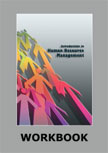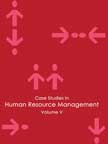Nokia - Fostering Innovation
|
|
ICMR HOME | Case Studies Collection
Case Details:
Case Code : HROB023
Case Length : 14 Pages
Period : 1997 - 2002
Pub Date : 2003
Teaching Note : Available
Organization : Nokia
Industry : Mobile Telecommunication
Countries : Finland
To download Nokia - Fostering Innovation case study
(Case Code: HROB023) click on the button below, and select the case from the list of available cases:

Price:
For delivery in electronic format: Rs. 400;
For delivery through courier (within India): Rs. 400 + Shipping & Handling Charges extra
» Human Resource and Organization Behavior Case Studies
» HRM Short Case Studies
» View Detailed Pricing Info
» How To Order This Case
» Business Case Studies
» Area Specific Case Studies
» Industry Wise Case Studies
» Company Wise Case Studies

Please note:
This case study was compiled from published sources, and is intended to be used as a basis for class discussion. It is not intended to illustrate either effective or ineffective handling of a management situation. Nor is it a primary information source.
Chat with us

Please leave your feedback

|
|




<< Previous
Background Note
|
The history of Nokia can be traced back to the year 1865, when, Fredrik Idestam,
a mining engineer, established a forest industry enterprise on the banks of the
river Nokia in South-Western Finland to manufacture paper. The enterprise was
called the Nokia Company.
Later, in 1898, Carl Henrik Lampen, a shopkeeper and J.E. Segerberg, an
engineer, set up the Finnish Rubber Works Ltd. (FRW) to manufacture rubber and
associated chemicals. In 1912, Konstantin Wikstrom, an engineer, set up the
Finnish Cable Works (FCW) to manufacture electrical cables for lighting
purposes. These 3 companies were merged in 1967 to form the Nokia Corporation.
|

|
In the early 1900s, FRW started exploring possibilities of expansion to meet
increased production. It ultimately decided to enter into a partnership with
Nokia Company, which had by then diversified into power generation, to
purchase energy inexpensively from the Company for its own operations. In
1904, FRW relocated to a place near the Nokia river and started working in
cooperation with the Nokia Company.
|
|
During the early 1900s, the FRW grew, and in 1922,
it bought a majority stake in the FCW which was then in the midst of
a financial crisis. The 3 companies then started working in
cooperation and managed to capture market leadership in their
respective areas. Talks of integrating the 3 companies through a
merger began surfacing at board meetings from the early 1930s. This
however, met with stiff opposition from auditors and lawyers who
rejected such a move on the grounds that it was not in accordance
with corporate bylaws. Consequently, the board voted against the
merger in 1937. The issue emerged again only in the 1960s, when the
Nokia Company began moving towards the technology sector. |
Over the years, the FRW had been controlling the Nokia
Company and the FCW through majority stakes. However, as the business grew and
the control pattern no longer reflected the changing revenue mix of the company,
talks of a merger started resurfacing. To gain economic efficiency and deal with
the threat posed by international competitors, a merger seemed desirable at that
point of time.
In 1967, the original Nokia company was merged with the FRW and the FCW to form
the Nokia Corporation. This new company had four major businesses-forestry,
rubber, cable and electronics...
Excerpts >>
|
|










